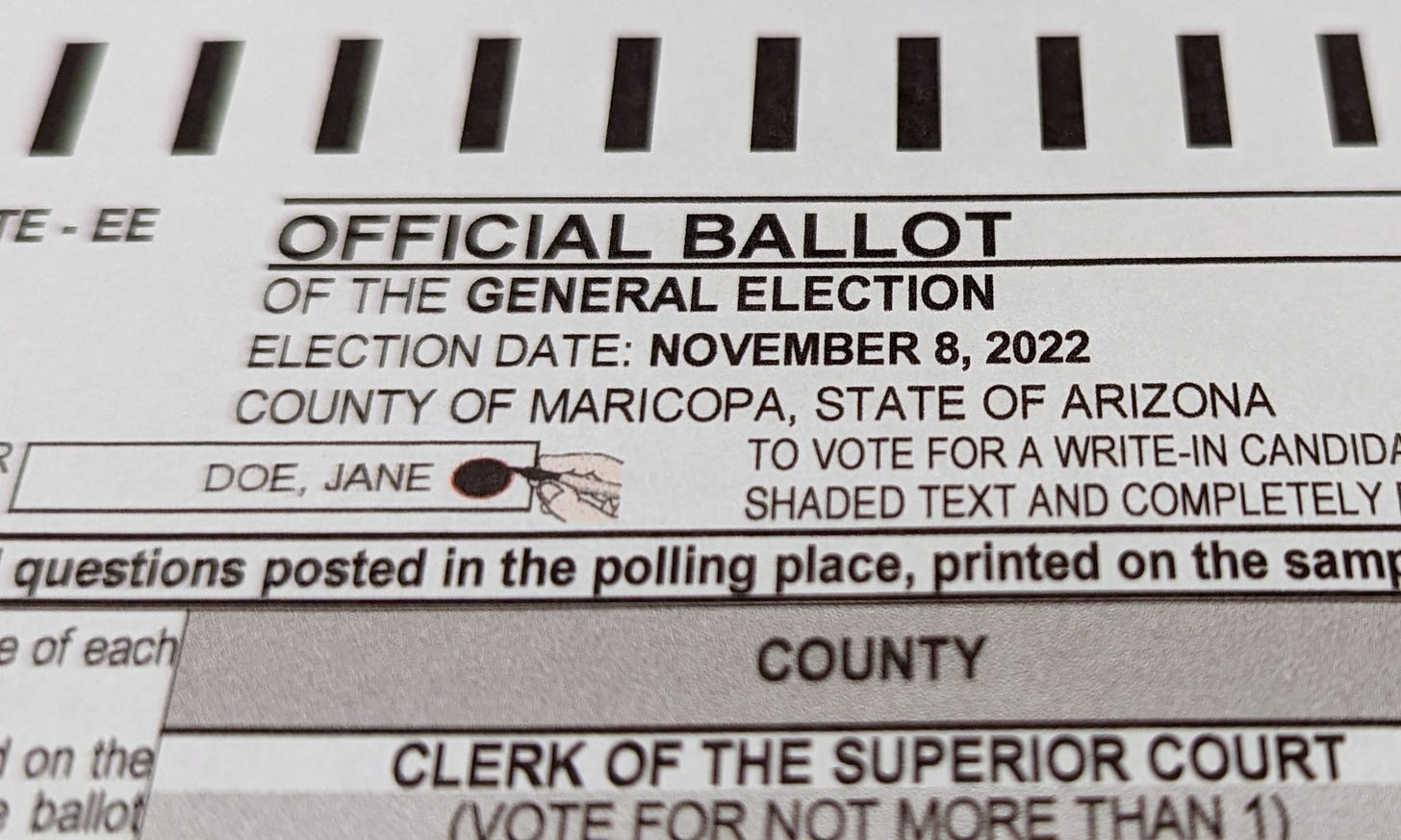Maricopa County ballot tabulation problems cause discovered, Printer manual: Paper weight up to 80 pounds supported county’s ballots were printed on 100 pound paper
Maricopa County ballot tabulation problems cause discovered, Printer manual: Paper weight up to 80 pounds supported county’s ballots were printed on 100 pound paper
Who made the decision to use 100 pound paper when 80 pound paper was used in 2020 and in most counties in the US?
From Votebeat Arizona.
“As Maricopa County investigates what exactly caused machines to reject thousands of voters’ ballots on Election Day, a Votebeat analysis of technical evidence found that local officials may have pushed the county’s ballot printers past their limits.
The thickness of the ballot paper the county used, the need to print on both sides, and the high volume of in-person voting are all likely to have contributed to poor print quality on ballots, according to Votebeat’s review of printer specifications, turnout data, and interviews with eight ballot-printing and election technology experts.
“It was a cascade of events, and once the first domino fell, they were setting the dominos back up while rearranging the deck chairs on the Titanic,” said Genya Coulter, a senior election analyst and director of stakeholder relations for election technology and security nonprofit OSET Institute.
The poor print quality caused machines to then reject thousands of ballots across the county, forcing voters to instead place their ballots in a secure box to be tallied later. Two technical experts closely familiar with the county’s equipment, who did not want to be named because they didn’t want to get ahead of the county’s public statements, said that the paper thickness was likely a major factor in why the toner — the powder laser and LED printers use to make images on paper — did not properly adhere to both sides of the paper.
The county used thicker ballot paper than the printer supports when printing on both sides of the page, according to the user manual for the OKI B432dn LED printers. Paper weight of up to 80 pounds is supported, but the county’s ballots were printed on 100-pound paper.
“To perform high-quality printing, be sure to use the supported paper types that satisfy requirements, such as material, weight, or paper surface finishing,” the manual specifies.
The printers’ fusers, which melt the toner onto the paper, could have also degraded by the time Election Day arrived, said Coulter, who along with working for OSET, has advised and trained election workers on technology problems.”
###
“Maricopa’s testing somehow did not capture the problem. Election technical experts such as Neal Kelley, a ballot-printing expert and longtime former Orange County registrar of voters, say comprehensive testing is key. California is the only state with a state certification program for printers that requires rigorous testing before a county can use a printer, spurring election officials such as Kelley to use a comprehensive process to understand a printer’s capacity before buying them.
County officials first used the printers in 2020 and again in this year’s primary, and they didn’t know what difference could have triggered the problems in the general election. But in 2020, the county used 80-pound paper. And in the primary, the vast majority of ballots, or about 80% of ballot styles, were one-sided, according to Gilbertson. When only printing on one side, up to 110-pound paper is supported, according to the OKI manual.
Why some printers had problems and others didn’t is unclear. It could have to do with the age of the printers or the fusers. The county has only used the printers to print ballots since 2020 but was using them to print ballot envelopes during early voting before that. Of the fewer than 600 OKI printers the county currently has, 20 were purchased in 2017 and the rest were purchased in 2018, Gilbertson said.
Maricopa County officials declined a request for an in-person or phone interview for this story, and instead asked that Votebeat send questions in writing, with Gilbertson citing “lawsuits” as the reason.”
###
“Votebeat could find only 10 counties of the 50 largest in the U.S. that print and tabulate their ballots on the spot on Election Day, using research from the National Conference of State Legislatures and Verified Voting. That’s in part because vote centers aren’t legally permitted everywhere.
Printing a ballot is a very precise task, from print quality to paper alignment, considering how sensitive ballot scanners are. And printers are known for their IT headaches.
Jeff Ellington, CEO of Runbeck Election Services, which manufactures the system that Maricopa County and many other counties use, said Runbeck chose which printers to pair with its ballot-on-demand system only after rigorous testing.
While the B432s are widely used for ballot printing, along with other OKI printers, they won’t be soon. OKI discontinued printer sales in the U.S. in March 2021, according to Stricklin, although customer support and parts are still available. Printer parts are typically available for five to seven years after a printer is discontinued, Stricklin said.
“We have not received any technical support inquiries regarding the Maricopa County printers,” Stricklin said. “As I noted above, we continue to maintain a customer support center to assist our ballot partners, or any customers, should they require technical support.”
So if other counties use these printers, why did only Maricopa County have the problem?
Votebeat’s review of similar systems across the country found one main difference: paper thickness. Orange County and other counties in California that are similar to Maricopa County in size and system, as well as many Florida counties, all use 70- to 80-pound paper.
Most counties use 80-pound paper, Ellington said.”



